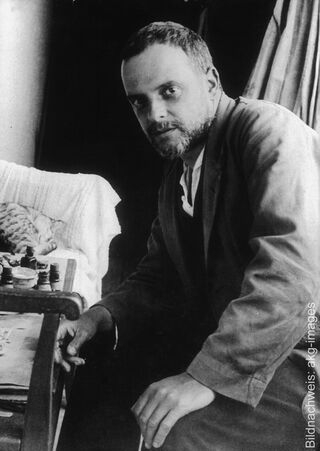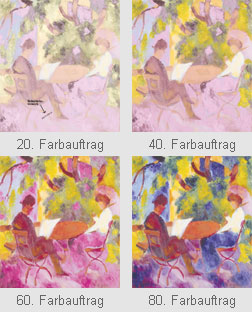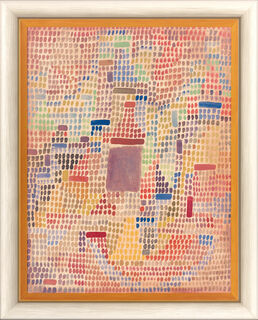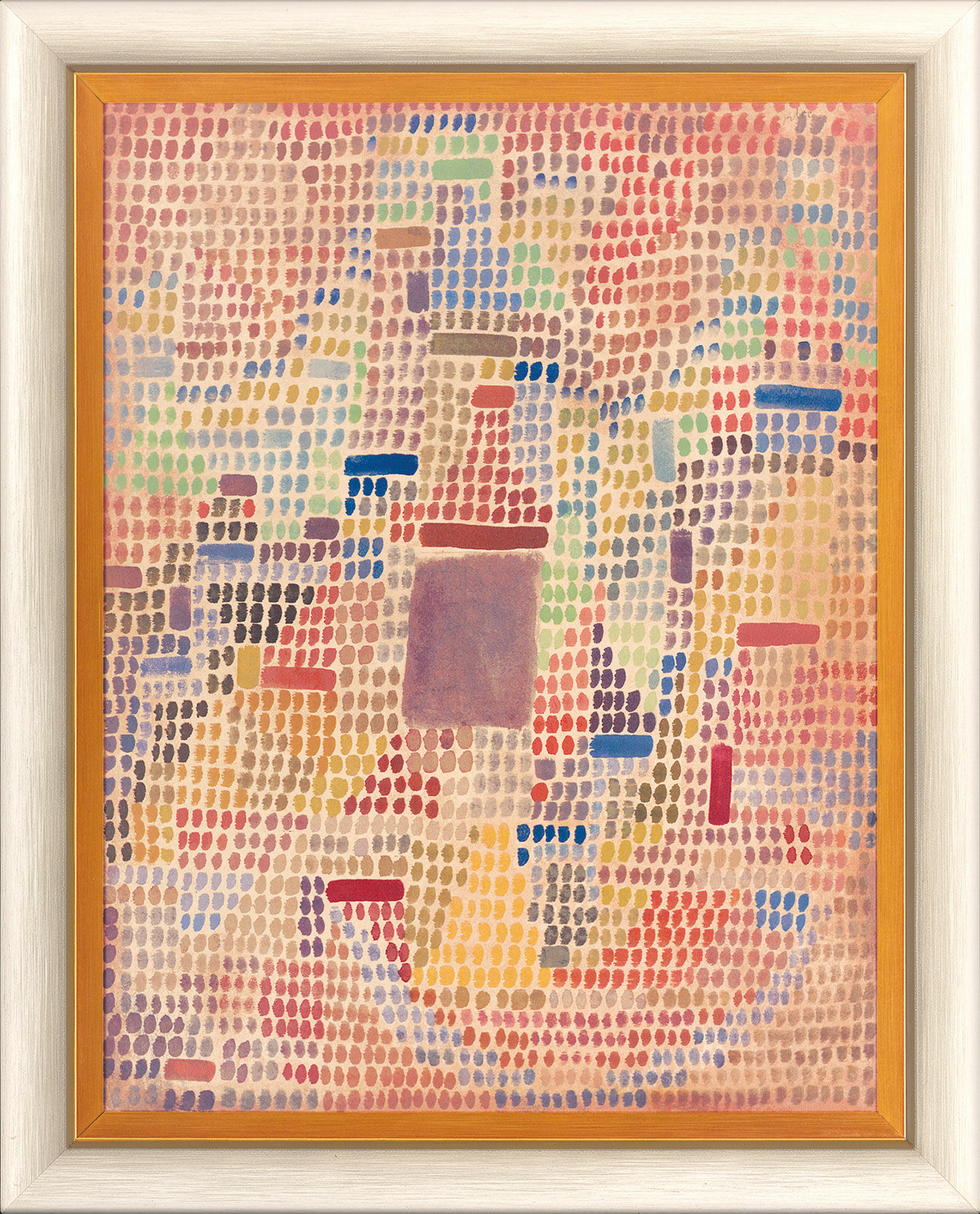Picture "With the Entrance" (1931), framed


Picture "With the Entrance" (1931), framed
Quick info
limited, 250 copies | original Dietz replica | mixed media on cardboard | framed | size approx. 54 x 44 cm (h/w)
Detailed description
Picture "With the Entrance" (1931), framed
"With the Entrance" from 1931, Paul Klee focuses on a rectangle surrounded by dots. Klee wanted to unite sound and colour for this work.
Original: 1931, Christie's Images Ldt, London.
Original Dietz replica. Mixed media on cardboard in 85 colours. Limited edition of 250 copies. Framed with a white-gold real wood strip. Size incl. frame approx. 54 x 44 cm (h/w).

About Paul Klee
He was called "the unique one" by his fellow artists: Paul Klee (1879-1940) shaped the understanding of modern art like hardly anyone else. With his mosaic-like composed works, he created a completely new style.
Born in Bern in 1879, Klee, a German-Swiss, turned out to be a double talent from an early age on: both his drawing skills and his violin skills promised him a musical as well as an artistic career. Klee decided on art and went to the Munich Art Academy, where he studied as a student of Franz von Stuck, among others. But it was not so much his academic studies that helped him develop an independent style but rather an extended study trip to Italy with his artist friends. Subtle symbolic depictions full of wit and humour became his trademark. Usually, just small formats and often merely drawings, enchant the viewer.
In 1906 Klee married the pianist Lily Stumpf and they had a son, Felix. The young family lived a very secluded life in Munich. It was only through the draughtsman Alfred Kubin that Klee became acquainted with the group known as the "Blaue Reiter". Klee quickly became friends with Kandinsky and Marc, with whom he shared the conviction that artistic creation was of spiritual nature.
A trip to the North African city of Tunis in 1914 with his painter friends August Macke and Louis Moilliet helped Klee to find new joy in colour and a genuine creative frenzy. "Color possesses me. I don't have to pursue it. It will possess me always, I know it. That is the meaning of this happy hour: Color and I are one. I am a painter." he writes in his diary. This was followed by countless watercolour paintings, with which he developed his own unique style.
Exhibitions organized by the Blaue Reiter made Klee famous. By the time he is appointed as a "master" by the Bauhaus, he already was a celebrated artist. In 1933, the National Socialist campaign against "degenerate art" forced Klee to leave Germany and settle back in Switzerland. With a true work mania, he tried to rebel against an incurable illness that conquers the painter, who is now internationally famous, only a few years later (1940).
Term for paintings and sculptures that are detached from the representational depiction, which spread throughout the entire western and parts of the eastern world from around 1910 onwards in ever new stylistic variations. The Russian painter Wassily Kandinsky, born in 1866, is considered the founder of abstract art. Other important artists of abstract art are K.S. Malewitsch, Piet Mondrian, and others.
Günter Dietz developed a revolutionary method for the authentic reproduction of paintings, where not the usual printing inks are used, but the same original colours used by the artist. Depending on the artist's painting technique, up to 140 (!), different paint applications need to be applied in order to achieve a perfect replica of the original that also tangibly reproduces the "relief" and pastosity of colour composition.
Here are the examples of 'Couple at the Garden Table' by August Macke:

Furthermore, the same material as the original, such as reproduction on canvas, paper, wood, copper, parchment is always used.
The result is a perfect, gridless reproduction that comes very close to the original in expressiveness and effect. Even museum specialists often can not distinguish the replica from the original. Therefore, a special security note must be added, which is visible only under X-rays.
The edition of most Dietz replicas is limited, usually to 950 copies. Each canvas replica is stretched onto a frame as the original, so you can retighten the canvas in case of fluctuations in room temperature and humidity. A high-quality solid wood strips round off every Dietz replica.
Numerous masterpiece paintings of Rembrandt, Caspar David Friedrich, Claude Monet, Gustav Klimt and various others have been recreated by the "Dietz Offizin". Famous modern artists such as Pablo Picasso, Salvador Dalí, Max Ernst, Friedensreich Hundertwasser, Joan Miró and Marc Chagall have used this method developed by Günter Dietz in order to have replicas of their works produced.
Press comments:
"The Dietz System provides images as good as the originals. What the electronics did with the invention of Hi-Fi and stereo for music playback - here the graphic technology made up for visual art." (Die Zeit, German newspaper)
"In theory, there is no difference between the original and the Dietz replica. They should not be called reproductions, but facsimiles." (Newsweek, US-American news magazine)
"For art printers all over the world remains unrealizable to this day, what Dietz only managed with the help of printing technology: The perfect reproduction of painted works." (Der Spiegel, German news magazine)
Collective term for the painters and sculptors of the 20th century, such as Pablo Picasso, Salvador Dalí, Joan Miró, Marc Chagall and others, whose works are the most recognized in our times.
A true-to-the-original reproduction of an artwork in the same size and with the best possible material and colour uniformity.
The mould is usually taken directly from the original so that the replication reproduces even the finest details. After casting the replication, using the most appropriate method, the surface is polished, patinated, gilded or painted according to the original.
A replication of ars mundi is a recognizable copy of the original.


